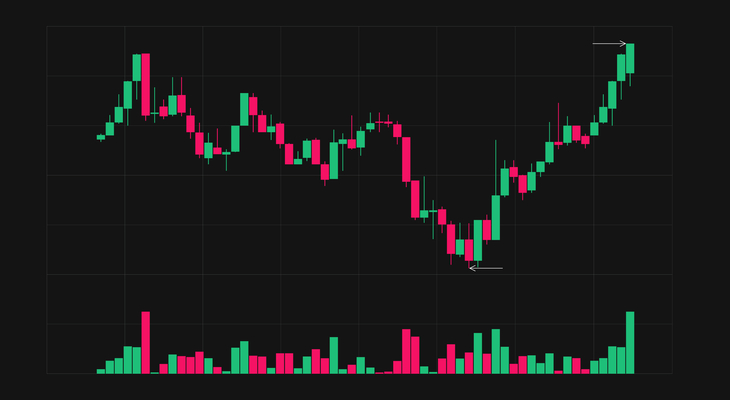The foreign exchange market is often likened to a vast, turbulent ocean. The waves of opportunity are ever-changing and can offer great rewards, yet they can also bring about tremendous risk.
To navigate this complex and unpredictable market, traders must understand how to leverage lot sizes and risk tolerance. Knowing the right lot size to choose and the level of risk to take can help traders maximize their profits and protect their investments.
With knowledge and skill, traders can ride the waves of the forex market to success.
Key Takeaways
- Lot size determines the size of a position in the forex market, with standard, mini, and micro lots being common types.
- Traders should never risk more than they can afford to lose and should seek independent financial advice if risks are unclear.
- Inexperienced traders with small accounts should avoid trading standard lots and instead opt for mini and micro lots.
- Effective risk management, including position sizing, stop loss placement, and risk-reward ratio, is crucial for maximizing profits while managing risk.
What is a Lot?
A lot is a unit of measure used in the forex market to determine the size of a position taken, and it is typically expressed in terms of how many units of the base currency are traded.
Three common types of lots are the standard, mini, and micro lot. A standard lot is equivalent to 100,000 units of the base currency, a mini lot is 10,000 units, and a micro lot is 1,000 units.
Calculating profit and margin requirements help traders decide the lot size that best fits their risk tolerance. It is essential to consider the level of experience when trading and to never risk more than one can afford to lose, as trading leveraged products carries a high level of risk.
The information provided is not a solicitation for transactions or an obligation to purchase investment services. Therefore, traders should seek independent financial advice if the risks involved are unclear.
Lot Size Considerations
Navigating the foreign exchange market requires a judicious approach that takes into account lot size considerations and risk appetite.
For instance, a trader with a $10,000 account should not trade a standard lot, as the cost per pip would be $10, which could prove too costly for an inexperienced trader.
Calculating the right position size is essential for a successful trading strategy. Mini and micro lots are preferable for traders with smaller accounts, enabling them to benefit from smaller moves in the market without taking on excessive risk.
Other markets, such as stocks and commodities, also offer different lot sizes, allowing traders to tailor their investments more precisely.
To maximize profits, traders should take the time to understand and calculate their lot size and risk tolerance.
Risk Management
Managing risk effectively is an important part of successful trading, as it helps to protect capital and can reduce the possibility of large losses. To maximize profits while minimizing risk, position sizing and stop loss placement should be taken into consideration.
Position sizing means adjusting the size of the trade according to the risk tolerance and available trading capital.
Stop loss placement is the setting of a predetermined exit level to minimize losses.
Risk-reward ratio should be determined to set realistic goals and expectations in terms of profits and losses.
Risk management strategies should be tailored to fit a trader’s individual needs.
By understanding lot sizes and risk tolerance, traders can maximize their potential profits while managing their risk.
Frequently Asked Questions
How can the value of a pip help traders maximize profits?
Pips can help traders maximize profits by setting stops and managing their money wisely. By monitoring price movements and strategically setting stops, traders can protect their profits while also taking advantage of small movements in the market to maximize their returns.
What is the recommended lot size for beginner traders?
"Beginners should start with a micro lot size (1,000 units) to minimize risk and steadily increase lot size as their trading experience grows. ‘Slow and steady wins the race’ – scalping strategies, stop losses, and careful risk management are essential for successful trading in the forex market, even for experienced traders."
How can traders minimize risk when trading with a standard lot size?
Traders can minimize risk when trading with a standard lot size by properly calculating and managing the risk they are taking on, diversifying their portfolios, and balancing their risk and reward expectations.
What advice should traders seek if they are unsure of the risks associated with trading?
Traders should seek independent financial advice to assess the risks associated with trading. One interesting statistic is that with a standard lot size (100,000 units) traders can make $10 per pip. Money management and risk assessment are paramount to successful trading, especially with leveraged products like forex and CFDs.
What level of experience should traders consider when trading leveraged products?
Traders should consider their level of experience and risk allocation when trading leveraged products. Adequate money management is essential to minimize potential losses. Therefore, it is best to seek independent financial advice for guidance with risk assessment and allocation.
Conclusion
The importance of understanding lot sizes and risk tolerance in forex trading cannot be overstated. It is a delicate balance between capital and risk that must be maintained in order to maximize profits.
To do this, traders must be aware of their account assets, risk tolerance, and the size of the lots they are trading. Much like a tightrope walker, a forex trader must find the right balance to stay in the game.
Those who understand lot sizes and risk tolerance will be able to find success in the forex market.











